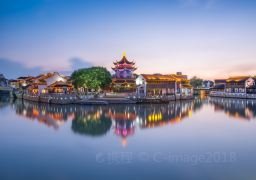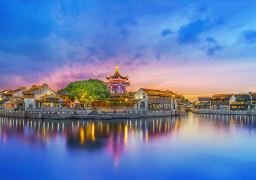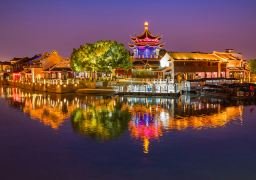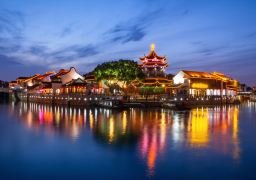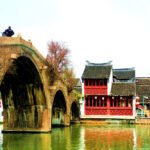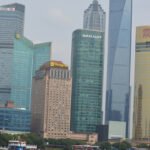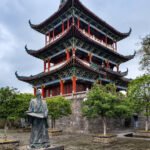Shantang Street stretches from the northwest end at Tiger Hill to the southeast end at Changmen. The street runs parallel to the Shantang River, with ancient bridges arching over the water and rows of old houses with whitewashed walls and black tiles lining both sides, interspersed with numerous shops. At night, the red lanterns light up and reflect in the river, creating a picturesque scene perfect for photography. Visitors can also take a boat tour or find a teahouse to enjoy tea and listen to Suzhou Pingtan. Shantang Street runs southeast to northwest and is approximately seven miles long, hence the name ‘Seven Mile Shantang’. With a history of a thousand years, Shantang Street was built under the supervision of the Tang Dynasty poet Bai Juyi during his tenure in Suzhou. Today, one can still see the Bai Gong Temple at the southern end of the street, built by the people in gratitude for Bai Juyi. Emperor Qianlong of the Qing Dynasty had a particular fondness for Seven Mile Shantang, and the imperial stele pavilion with his calligraphy ‘Shantang Seeking Beauty’ is still well preserved. There are also many historical sites such as archways, temples, and guild halls, with more than a dozen guild halls that once served as the Suzhou office for foreign chambers of commerce, mostly built during the mid-Qing Dynasty. The southeast section of Shantang Street, near Changmen, known as ‘Old Shantang Street’, is about 360 meters long. This section is densely packed with shops, featuring various craft stores and snack shops, as well as major attractions such as Yuhantang, Antai Firefighting Association, Tonggui Bridge, Suzhou Chamber of Commerce Museum, and the ancient stage. Yuhantang is the former residence of Wu Yipeng, a minister of the Ming Dynasty, and represents an ancient architectural complex outside Suzhou City. This building combines various forms of Chinese rooms such as halls, chambers, towers, pavilions, and studios, allowing visitors to experience the rich cultural and artistic characteristics of the Ming Dynasty through its carved beams and painted rafters. Tonggui Bridge is an arched stone bridge that spans the Shantang River and is a great place to appreciate the water town scenery of Suzhou, also a classic scene for oil paintings and watercolors. It is common to see people carefully painting on the bridge, and award-winning films such as ‘Plum Blossom’ and ‘Red Dust’ were filmed here. Shantang Street is home to many traditional food shops, including large restaurants like Songhe Building, as well as affordable and delicious snack shops like Rongyang Building and New Year’s Snack Shop. There are also pastry shops like Huang Tianyuan and candy shops like Cai Zhi Zhai. Visitors can taste traditional snacks such as plum blossom cakes, begonia cakes, and red bean paste porridge. Antique, calligraphy, carving, and paper-cutting shops are also abundant. Opening hours are all year round, open all day. Service facilities parking lot: [Xinmin Bridge Parking Lot] Reference price: ¥6/hour; Address: Xinmin Bridge; Spaces: 60.
